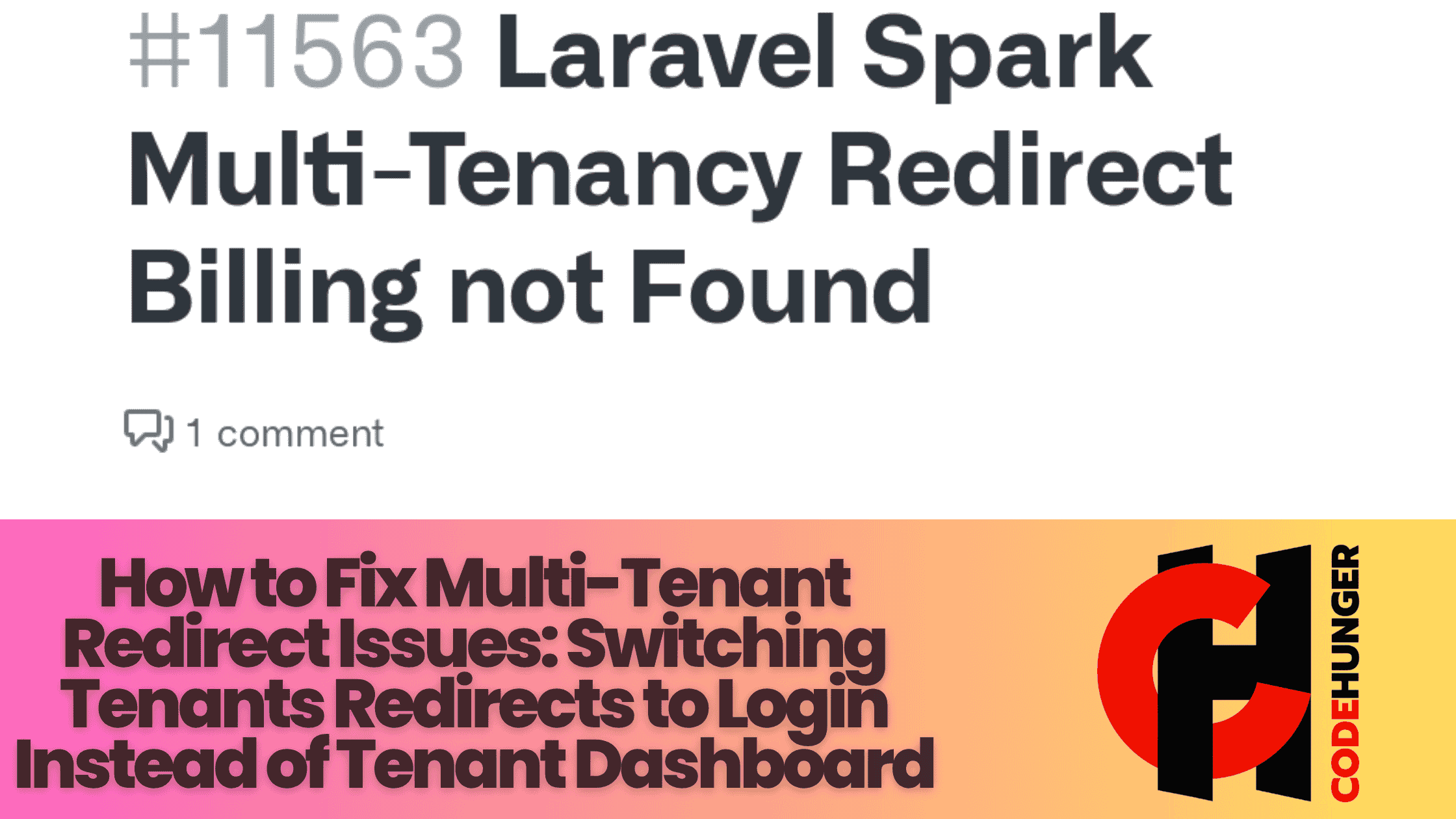How to Fix Multi-Tenant Redirect Issues: Switching Tenants Redirects to Login Instead of Tenant Dashboard
Introduction
If you are building a multi-tenant SaaS application using Laravel, Tenancy for Laravel, or any other framework, you might encounter this annoying issue: when switching to another tenant, users are unexpectedly redirected to the login page instead of the intended tenant dashboard.
This redirect problem not only disrupts user experience but also increases bounce rate and support queries. In this post, we’ll unpack why this happens, explore common scenarios, and implement step-by-step solutions to ensure your tenant switching is seamless.
What is Multi-Tenancy?
For clarity, multi-tenancy is a software architecture where a single application serves multiple customers (tenants) with isolated data and configurations. For example:
- Slack workspaces
- Shopify stores
- CRM tools supporting multiple client companies
A robust multi-tenant setup improves scalability, reduces infrastructure costs, and makes your SaaS easier to manage. However, redirect and authentication issues are common pitfalls when switching between tenants.
The Problem: Switching Tenants Redirects to Login
Scenario Example
Imagine a user is logged into Tenant A. They want to switch to Tenant B (e.g. another workspace or subdomain they are part of). Upon switching:
❌ Instead of landing on Tenant B’s dashboard, they are forced to log in again.
Why This Happens?
Here are technical reasons behind this behaviour:
- Session Domain Scoping
- If your session cookies are scoped per tenant domain or subdomain, switching to another tenant’s URL invalidates the cookie, logging the user out.
- Tenant Middleware Priority
- Middleware might be redirecting unauthenticated users before tenant resolution is complete, forcing login on tenant switch.
- Authentication Guards Misconfiguration
- When using separate guards per tenant, incorrect configuration leads to user state loss across tenants.
- Tenancy Package Settings
- Laravel Tenancy (tenancyforlaravel.com) requires correct
central_domains,tenant_domains, andmiddleware prioritysettings to maintain sessions across tenant switches.
Solution: Fixing Tenant Switch Redirects
✅ Step 1. Define Your Tenant Switching Flow
Decide how you want users to switch tenants:
- Do they have a central dashboard listing all their tenants?
- Can they access multiple tenants simultaneously?
- Is each tenant on a subdomain (e.g. tenant1.yourapp.com) or path-based (e.g. yourapp.com/tenant1)?
This determines your session and authentication design.
✅ Step 2. Configure Session Cookies for Multi-Subdomain
If your tenants use subdomains, ensure your session configuration supports them.
In config/session.php:
This allows session cookies to be valid across all tenant subdomains under yourapp.com.
✅ Step 3. Adjust Middleware Priority
If you use Laravel Tenancy, update your Http Kernel to load tenancy middleware before authentication middleware.
In app/Http/Kernel.php:
This ensures tenant context is resolved before auth checks, preventing false unauthenticated redirects.
✅ Step 4. Handle Authentication Guards
When tenants use different databases or user tables, define dynamic guards. Otherwise, for a single user table:
- Maintain a global user session across tenants.
- Upon switching, automatically authenticate the user in the new tenant context.
Example approach:
In the tenant app, create a route to validate the token and authenticate the user without login prompt.
✅ Step 5. Implement Secure Tenant Switch Authentication
For seamless and secure switching:
- Use signed URLs or tokens when redirecting to another tenant.
- Validate token expiry and ownership before auto-login.
- Log switching events for audit compliance.
Best Practices for Seamless Multi-Tenant Redirects
✔️ Use Centralised User Management: Manage user authentication centrally to minimise re-logins.
✔️ Always Validate Tenant Context: Prevent users from accessing tenants they aren’t assigned to.
✔️ Avoid Hardcoding Domains: Use dynamic configurations to adapt between local, staging, and production environments.
✔️ Test Thoroughly: Multi-tenancy edge cases can be tricky. Automate tenant switching tests.
Conclusion
Multi-tenancy empowers your SaaS to scale and serve diverse clients efficiently. However, redirect issues during tenant switching can frustrate users and damage credibility.
By configuring sessions correctly, adjusting middleware priority, and designing secure tenant switch flows, you ensure a smooth, login-free switching experience.
Ready to Build a Robust Multi-Tenant SaaS?
If you are facing redirect issues, onboarding complexities, or architectural bottlenecks in your multi-tenant Laravel application, our team at Code Hunger can help you architect, refactor, and scale your SaaS seamlessly.
✅ Contact us today for a free consultation to audit your multi-tenant app and implement best practices for sustainable growth.









